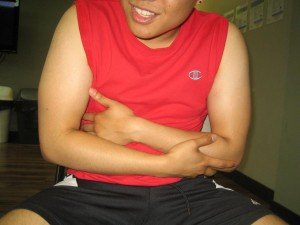Proctosigmoiditis is a form of ulcerative colitis that involves the sigmoid colon. It is important to note that the sigmoid colon links the rest of the colon to the rectum where the stool is eliminated from the body.
What are the causes and risk factors?
Proctosigmoiditis is the outcome of long-standing inflammation or irritation in the colon. The inflammation is the outcome of an immune response.
Some individuals are likely to develop ulcerative colitis. The risk factors for all forms of ulcerative colitis are the same such as:

- Family history of ulcerative colitis
- Living in an area with higher latitude
- Living in a developed nation
- History of infection with campylobacter or salmonella
What are the indications of proctosigmoiditis?
Diarrhea is the main indication for all types of ulcerative colitis. Oftentimes, this includes episodes of diarrhea that occurs more than 4 times in a day.
Oftentimes, the stool might have blood streaks due to the inflamed colon. Irritation and damage to the rectum can trigger the urge to have a bowel movement. Nevertheless, upon reaching the bathroom, the volume of stool is small.
Other symptoms that are linked with proctosigmoiditis include:
- Fever
- Abdominal pain or rectal pain
- Constipation
- Weight loss
- Rectal spasms
Rectal bleeding that is continuous or bright red in appearance should not be ignored. Oftentimes, the blood might appear tarry. It is vital to seek emergency care if these symptoms are present.
Management
Proctosigmoiditis does not affect a large region of the colon. The initial treatment prescribed by the doctor is 5-aminosalicylic acid which is an anti-inflammatory medication. This medication is available in various forms including enema, oral, foam or suppository.
Since proctosigmoiditis only involves the inferior region of the colon, suppositories are often used as an alternative for enemas. The oral form is used for those who could not tolerate or administer enemas.
For severe diarrhea or bleeding, hospitalization might be required. The individual is treated with intravenous steroids. In severe cases, surgery might be needed to remove the affected part of the colon.
